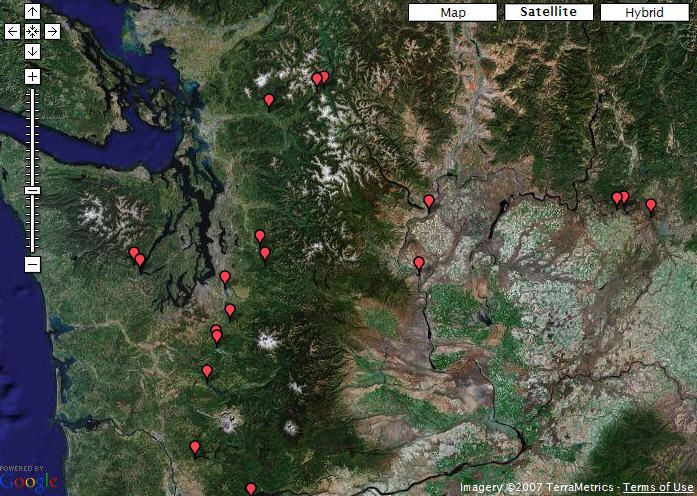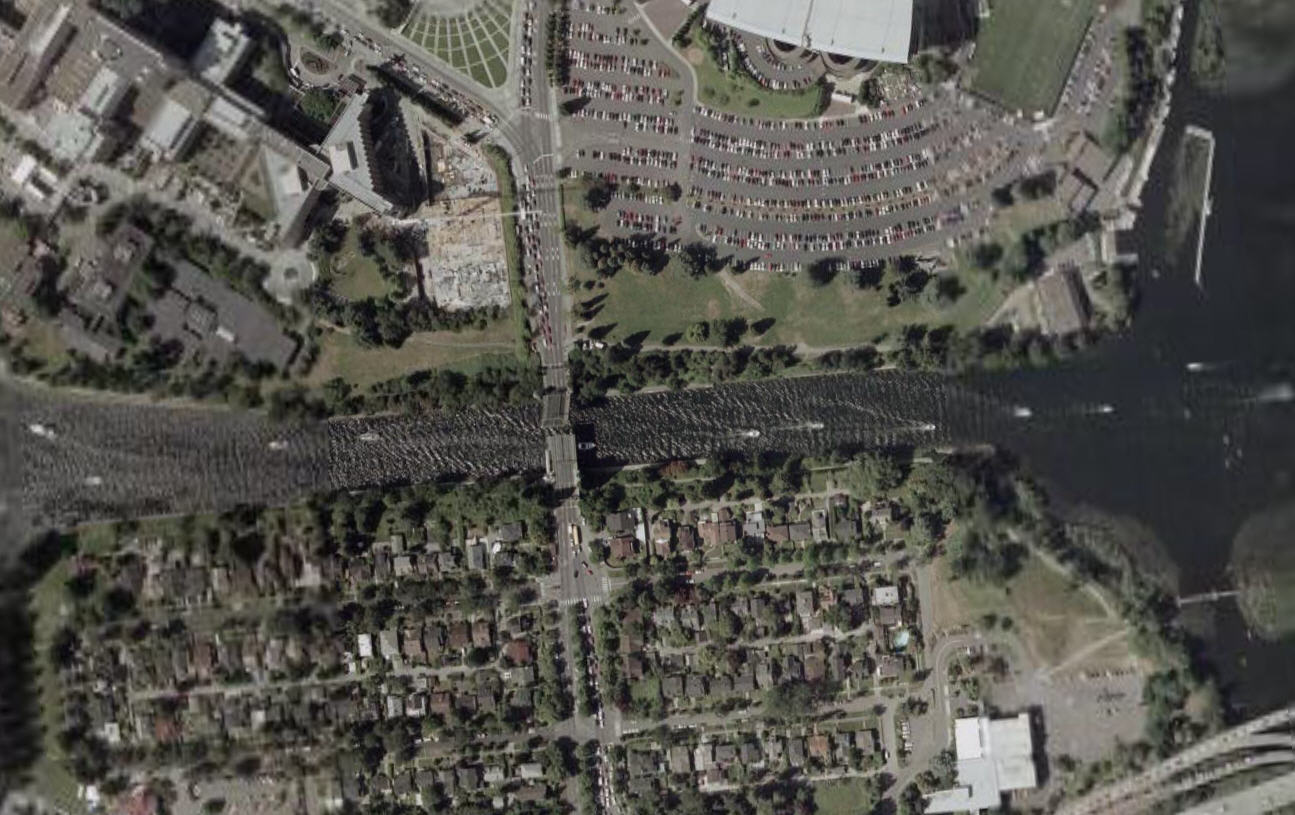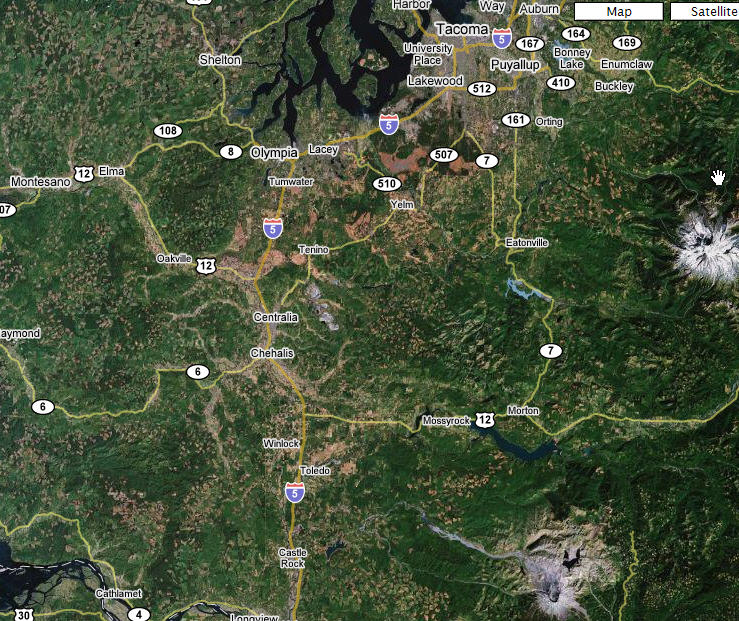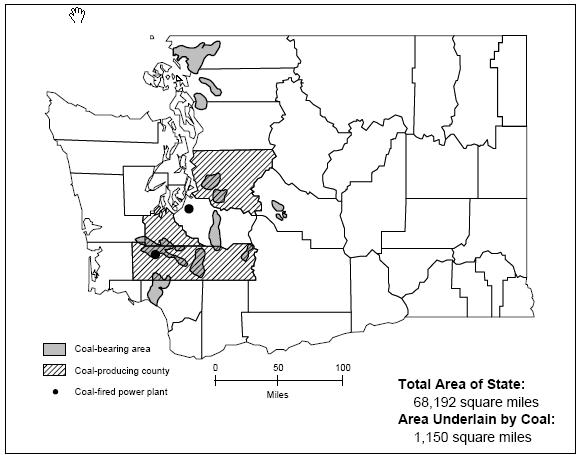Washington State: A Case Study in Energy Generation

Examining the time evolution of power construction and energy demand in the
state of Washington represents a good microcosm of the larger scale
problem of planning for increased demand.
We will see that Washington starts out with large energy potential and
small energy demand - a condition that favors the rapid growth of
industry and exportation of energy to more populated areas.
Later, during the 1970's, population growth became large in Washington
and the need for more in State power generation facilities escalated
and some poor choices were made as a result.
Location of Power Plants Constructed prior to 1940 in Washington State

The Era of Major dam Building (1950-1975)

But let's start near the beginning.
The history of Coal in Western Washington:
- In 1833, William Fraser Tolmie of the Hudsons Bay Company first found coal on the Cowlitz River:

- In 1851, Captain William Pattle, also of the Hudsons Bay Company, discovered a seam of coal under the present city of Bellingham while scouting for timber. Though the quality of his find was poor, the seam was easily accessible and its location near a harbor made it easy to transport the coal to the south. This was the first coal transported from Puget Sound to San Francisco. Coal was mined at this location for 25 years, until a fire and a flood closed the mine.
- In 1862, L. B. Andrews and David Mowery discovered coal near present day Issaquah.
- In 1863, another deposit was found on the eastern side of Lake Washington at Coal Creek. With two discoveries and an increasing demand for coal in California due to the growth of the western railways, a more concerted effort was made to bring the regions coal to market efficiently and profitably.


- The price in the Northwest during this period was $11 per ton. In San Francisco, coal fetched as much as $28 per ton. This large price differential made the investment in building and improving roads, tramways, and rail lines worthwhile.
 Historically in the US, infrastructure tracks the
flow of energy.
Historically in the US, infrastructure tracks the
flow of energy.
- The first issue to address was to reduce the cost of moving coal from Coal Creek to the steamers in Elliott Bay. The coal was first carried out of the mines in sacks. By 1871, the system was upgraded with a tramway from the mine to Lake Washington.

- Improvements were continually being made to this route, including the addition of a locomotive. By May 1872, coal was being dropped at Elliott Bay at the rate of 75-100 tons per day.
- In the 1880s, additional mines were in operation in the towns of Wilkeson and Carbonado, in Pierce County.
- Mines developed in Franklin and Black Diamond in King County and at Roslyn in Kittitas County. Washington coal was the chief source of fuel for San Francisco from 1882 to 1891 and California interests continually sought to gain control over the supply of coal from Washington.
- Coal production continued to increase in Washington throughout the remainder of the nineteenth century. In 1910, approximately 3.5 million tons of Washington coal was mined. In 1918, the figure was 4.1 million tons.
- On May 8, 1917 there was finally a navigable passage from the Lake Washington to Puget Sound:

Of course, true to our nature, shortly after the Lake Washington Ship Canal was finished, the coal had been
mined out on the east side.
Now skip forward a few decades until December 1951 Department of Interior did a survey
that revealed when the the existence of 1.75 billion
tons of bituminous coal under Lewis county (near Centralia).

And the coal is mined via open pit strip mining on a pretty large
scale. Note the large linear features which is where the tranmission
lines are.

20 Years later the Centralia Coal Fired Steam plant opened (in 1971)
with 1400 Megawatt capacity from 2 700,000 KW boilers.


That plant remains in operation, although these days some of the Coal
to the plant now comes from Wyoming. The electricity supplied by the plant
is piped into the "wholesale" market.









 Historically in the US, infrastructure tracks the
flow of energy.
Historically in the US, infrastructure tracks the
flow of energy.







